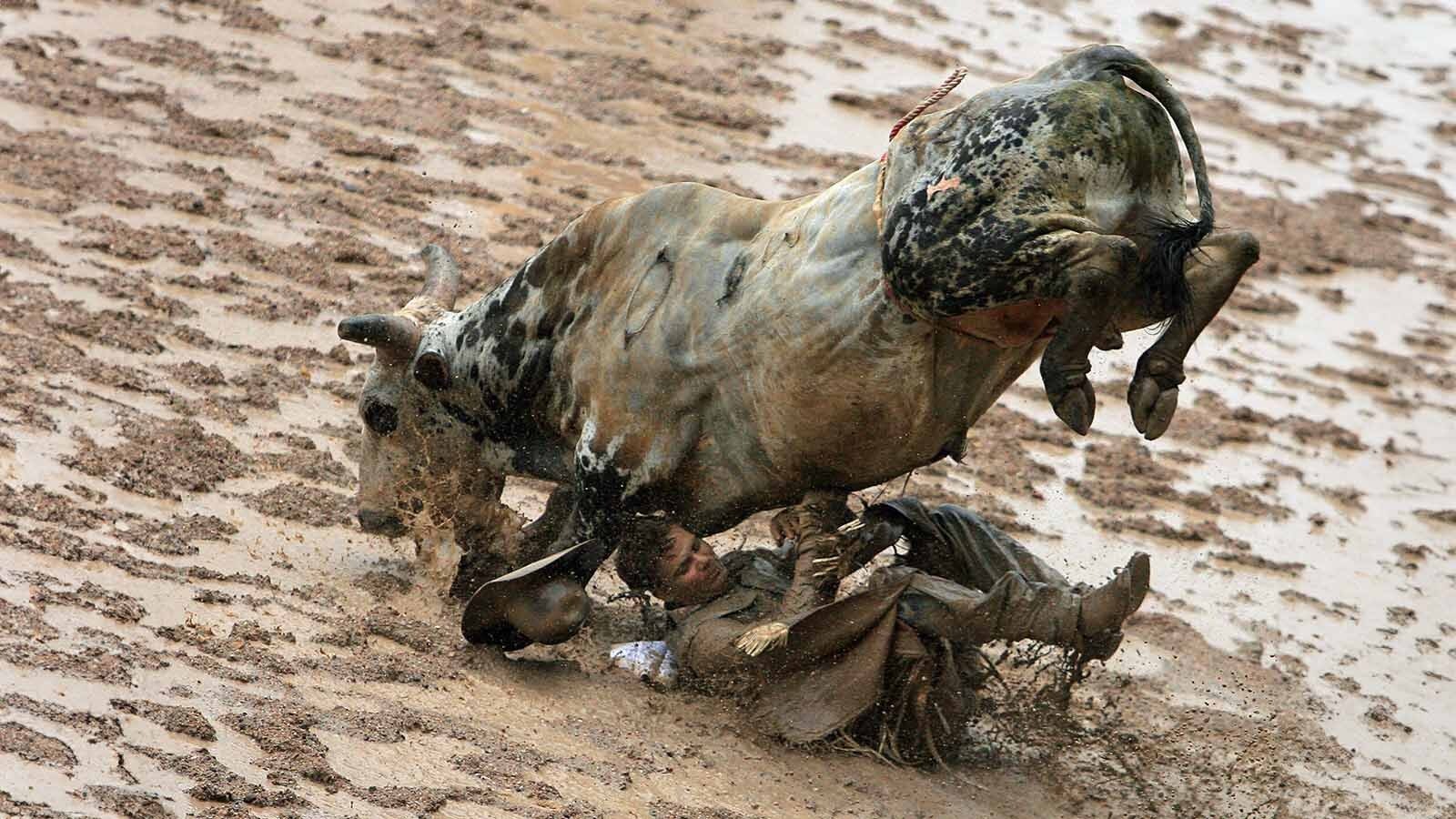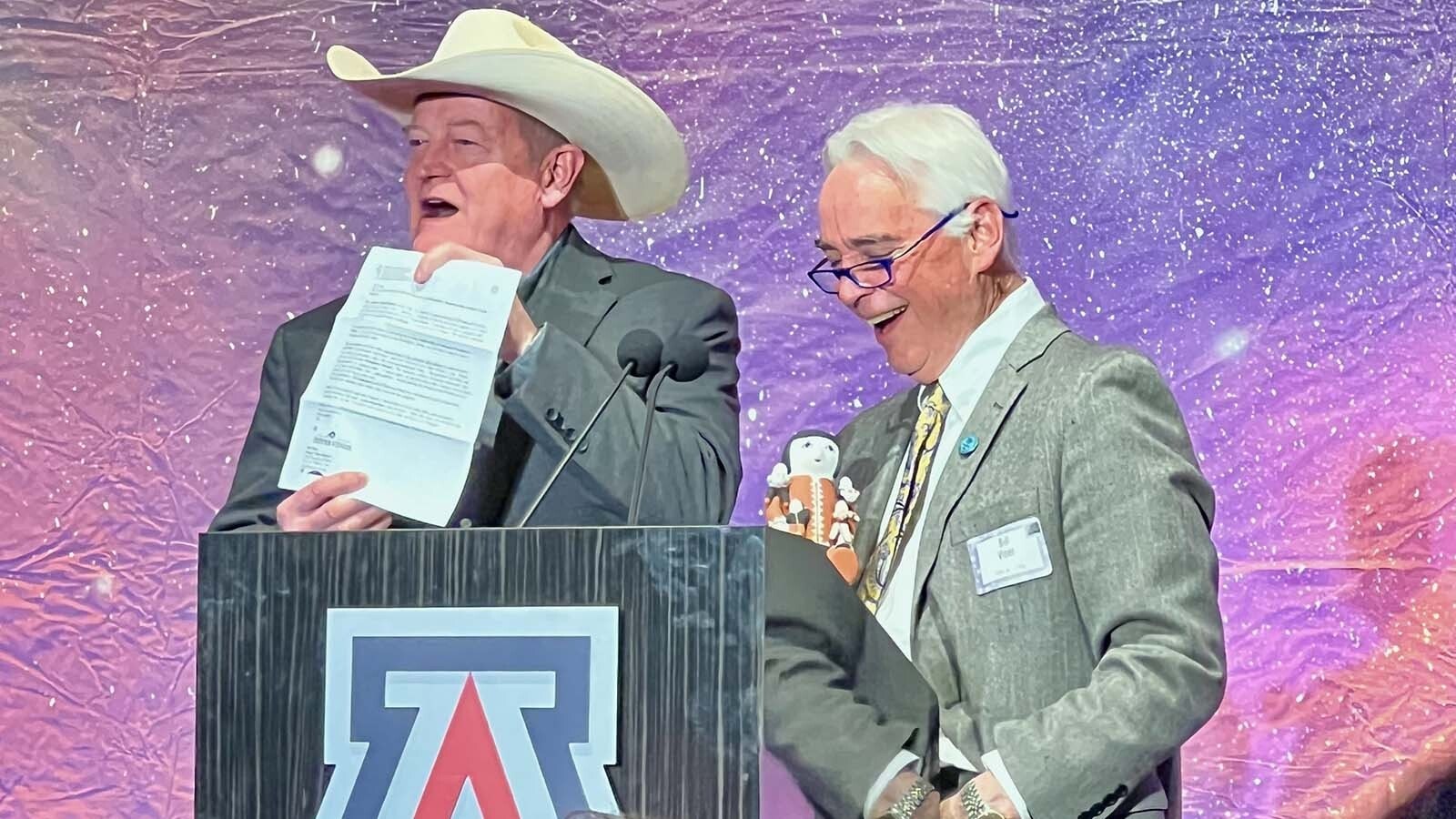There’s nothing like the dusty atmosphere of a summer rodeo. Historically, though, that hasn’t been the atmosphere at Cheyenne Frontier Days.
Wednesday was Cheyenne Day at the annual rodeo. And as thousands of people filled the stands at Frontier Park, Mother Nature decided to celebrate with more than an inch of rain.
Cowboy State Daily meteorologist and Cheyenne resident Don Day wasn’t surprised to see the storm, just as he hasn’t been surprised when it’s happened nearly every year for the last several decades.
“People who have lived in Cheyenne for a long time always joke that there are three seasons: winter, summer and Frontier Days,” he said.
Best Of Times, Worst Of Times
Cheyenne Frontier Days, billed as “the World’s Largest Outdoor Rodeo and Western Celebration,” has been a summer staple of Cheyenne since 1897. It always happens during the last week of July.
If any meteorologists were consulted, they might have suggested another time for the Daddy of ’Em All. Day’s historical analysis of Cheyenne’s climate shows that the last week of July is notoriously stormy.
“I did a quick sampling of precipitation in the month of July in Cheyenne, and I found that there is a pretty damning correlation,” he said. “If you graph it, the last 10 days of July tend to be wetter than the first 20 days of July.”
It’s not a sign that the universe hates Cheyenne Frontier Days. Day said there’s a perfectly reasonable and predictable explanation for the influx of monsoonal moisture.
“From the middle of July to about the third week of August, the central and south Rockies and central Plains are susceptible to surges of subtropical moisture coming up from Mexico and Central America,” he said. “Since the air is subtropical and coming from very low latitudes, you get a very moisture-rich environment.”
Low-latitude, moisture-rich air tends to create thunderstorms with heavy rainfall.
Given the prevailing climate patterns across Wyoming during the summer, those storms tend to form and let loose during the afternoon and evening when the grandstands at Frontier Park are packed with spectators.
Ironically, the day designated for Cheyenne residents has also been one of the wettest days during Cheyenne Frontier Days.
“Rain and thunderstorms tend to peak not only during Frontier Days, but during the Wednesday of Frontier Days,” Day said. “I think a lot of people probably chalked it up to bad luck, but there's a good meteorological reason why Frontier Days tend to have these heavy thunderstorms.”

All Day, Every Day
Monsoonal rain is nothing new during Cheyenne Frontier Days.
Phil Van Horn, former chairman of Cheyenne Frontier Days, can remember plenty of times when the weather wouldn’t cooperate.
"In 1982, it rained every day," he told Cowboy State Daily last July. "I remember one of our volunteers who was qualified to run heavy equipment was blading the track with a Caterpillar bulldozer every day, piling the mud along the fence so the track could work."
Van Horn said attendees are lucky if rain’s the only thing to worry about. There’s been far worse.
“In 2019, patrons were asked to get underneath the grandstands because the rain and hail were heavy enough that the show was briefly suspended,” he said. “All events, from rough stock to barrel racing, are affected by heavy rains when we get them, but the show keeps going.”
And it gets worse. Day said that as the surges of subtropical monsoonal moisture get stronger, the winds aloft over Wyoming get weaker.
“When the winds aloft are weaker, thunderstorms don't move quickly, and that can concentrate really heavy rain in a small area,” he said. “That’s why localized flash flooding is a concern at this time of year, and flash floods were reported on the southeast side of Cheyenne on Wednesday.”
The 1976 Big Thompson Flood that killed 144 people around Estes Park, Colorado; the 1985 flash flood and hailstorm in Cheyenne that killed 12 people; and the 1997 Spring Creek Flood that killed five people near Fort Collins were caused by summer subtropical surges of moisture.
“Historically, some of the bigger flash floods that have caused mayhem, death and damage are clustered around late July and early August,” Day said. “So climatologically speaking, this is the time of year when heavy rain-producing thunderstorms can occur, and they frequently do. And it happens to coincide with Cheyenne Frontier Days.”
Sacrilegious
Holding the Daddy of ’Em All during the week that’s most prone to furious thunderstorms and lethal flash floods doesn’t add to the drama that hundreds of thousands of people come to see at Frontier Park.
Should Wyoming find another time for Cheyenne Frontier Days?
“That's sacrilegious, and suggesting it will get you hate mail,” Day said.
Just because there’s an increase in subtropical thunderstorms during the last week of July doesn’t guarantee wet weather for Cheyenne Frontier Days. Both Day and Van Horn can recall many years when the rodeo was extremely dry and dusty.
However, Day went as far as to say a dry, dusty forecast is “the exception rather than the norm for Cheyenne Frontier Days. And this year is no exception.
“The thunderstorm threat for Thursday is pretty high,” he added. “The risk gets lower on Friday, Saturday and Sunday, but it doesn’t go away. People can point to years when it was hot and dry, but that’s unusual.”
Nevertheless, nobody panics when it rains at Frontier Park.
Van Horn has been intimately involved with Cheyenne Frontier Days for 40 years and couldn’t recall a single time the rain stopped the fun, even if it did delay it for a time.
“My money would be that, if there is a delay, that day's rodeo will finish sometime that day," Van Horn. “We've been through monsoonal rain before, and the show kept going. It may take the volunteers and ground crews a little while to get Frontier Park ready, but the events will go forward."

Get Used To It
The good news is that these subtropical surges have alleviated any concerns of drought in southeast Wyoming. Day said the precipitation situation has vastly improved in the last few months.
“Cheyenne has completely reversed its dry spell, and many areas of Laramie County have seen well above average precipitation since late May,” he said. “But there are winners and losers. We haven’t received any rain in Wheatland and Platte County. We’ve had good rain in eastern Wyoming while looking at some really dry conditions in western Wyoming.”
Day said these “monsoonal moisture plumes” like to follow I-25, meaning they tend to stay east of the Continental Divide. Most systems lack the strength to get up and over the Front Range and into western Wyoming.
When Cheyenne residents are selecting their favorite hats, buckles, and boots to wear to Cheyenne Frontier Days, they should also pair the perfect poncho to complement their ensemble. If history’s any guide, they’re going to need it.
“During the 10 days of Cheyenne Frontier Days, the odds are that there's going to be two or three days where you're going to get rained on,” Day said. “This year has been no exception.”
Contact Andrew Rossi at arossi@cowboystatedaily.com

Andrew Rossi can be reached at arossi@cowboystatedaily.com.





